Hypersonic Plane
It will take only two hours to fly from London to Tokyo, be virtually pollution free, and promises to be no louder than today’s modern planes.
There’s only one catch for prospective commuters – it will be another 40 years before commercial flights take place.
Plans were yesterday unveiled for the first hypersonic passenger jet, which would use three sets of engines to reach 3,125mph, more than four times the speed of sound, known as Mach 4.
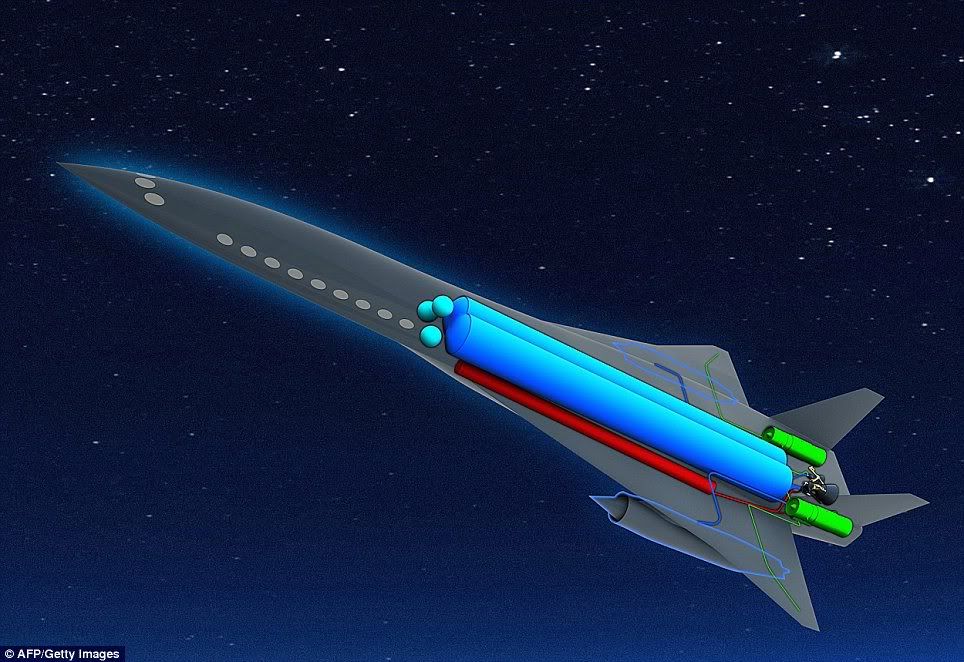
A computer-generated handout image of the 'Zero Emission Hypersonic Transportation'
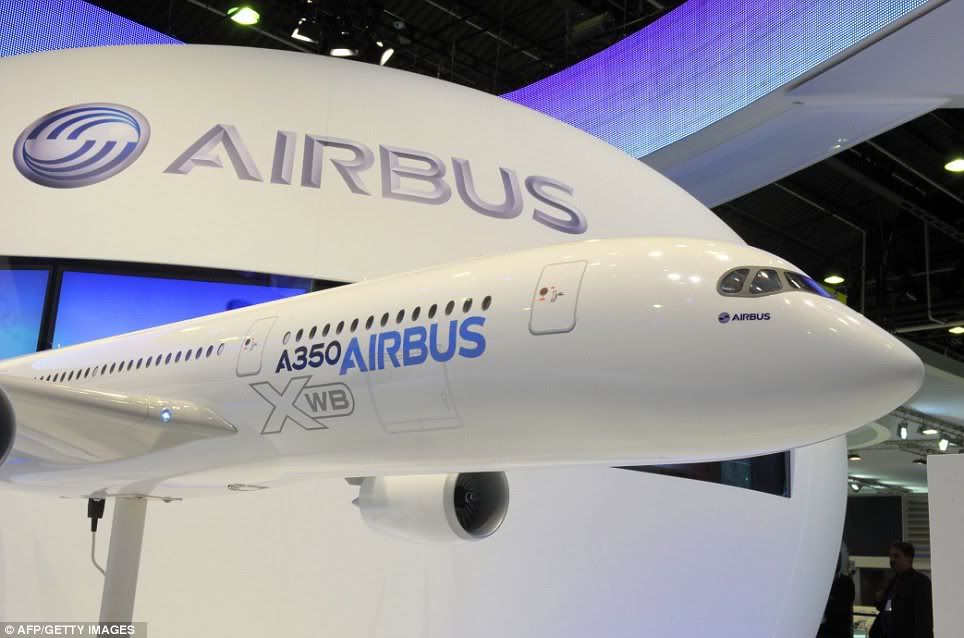
The model of an Airbus A 350 XWB on the EADS stand at Le Bourget airport near Paris this weekend
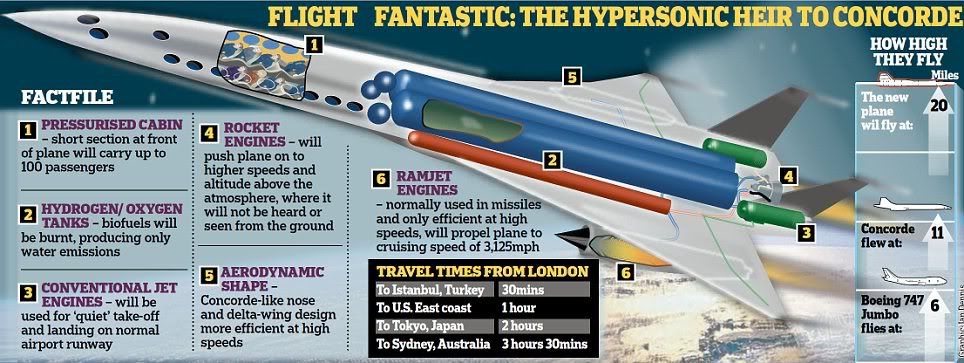
Hailed as the heir to Concorde, the aircraft would be propelled by a mixture of hydrogen and oxygen, meaning its only emissions would be water.
The project, developed by Airbus’s parent company EADS, was unveiled before the official opening of the Paris Air Show today.
Carrying up to 100 passengers, a set of conventional jet engines would help launch the aircraft from a normal airport runway, meaning the aircraft would not produce the noisy ‘sonic boom’ that Concorde did.
Once at a suitable height, the pilot would engage a pair of rocket engines which would propel the aircraft to much higher speeds and soar above the atmosphere, allowing a final set of engines known as ramjets to be utilised.
Currently used in missiles, these are highly efficient at speeds above 1,000mph, but cannot work from a standing start. They will help take the plane up to altitudes of 20 miles as it cruises at speeds beyond Mach 4. Cruising altitude for conventional passenger jets is around six miles.
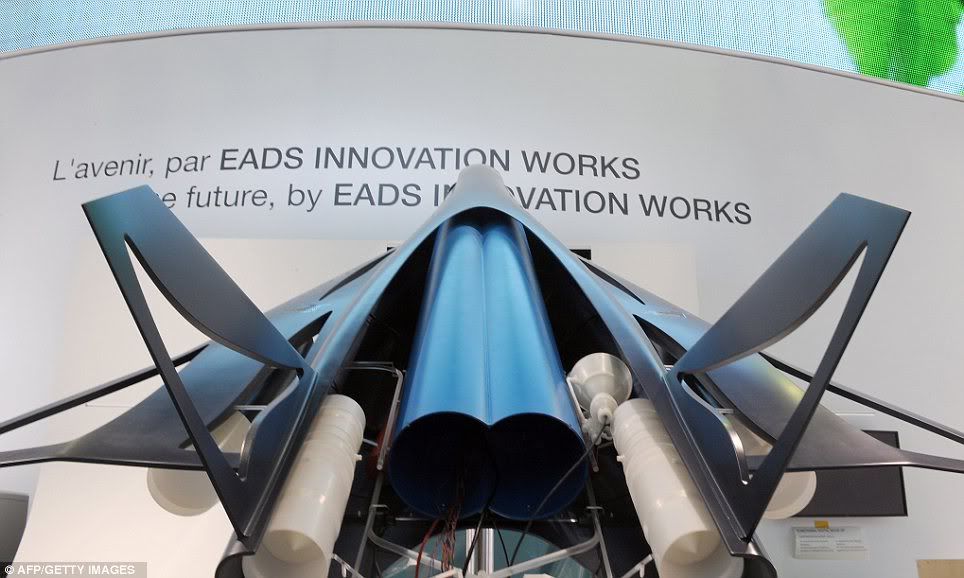
The plane uses rockets and turbojet engines and could take people from London to Tokyo in two hours
Once at cruising speed, the plane – dubbed ZEHST, for Zero Emission Hypersonic Transportation – could fly from London to Malaga in southern Spain in just 20 minutes. A flight to Istanbul would take 30 minutes, and the plane could reach the east coast of the U.S. in around one hour.
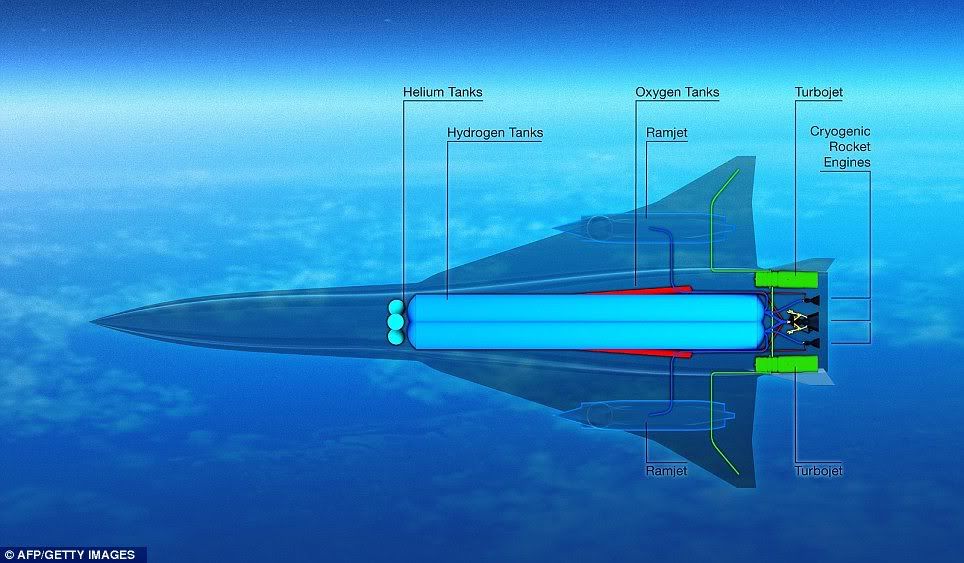
The plane is not expected to be operational until around 2040, according to EADS officials
Unlike conventional aircraft, the plane would be powered by biofuels made from seaweed – hydrogen and oxygen – therefore making it one of the world’s most eco-friendly aircraft.
The company, based in Toulouse, France, believes a plane capable of carrying up to 100 passengers could make its first commercial flight within 40 years.
But its limited capacity could be a major flaw, according to aviation experts. David Kaminski-Morrow, air transport editor at Flight International, said: ‘It is still very much a concept vehicle, but it is within capability, the technology is available. The real difficulty is the economics of making a completely new type of aircraft work. It will take billions to take it off the drawing board and into the skies.
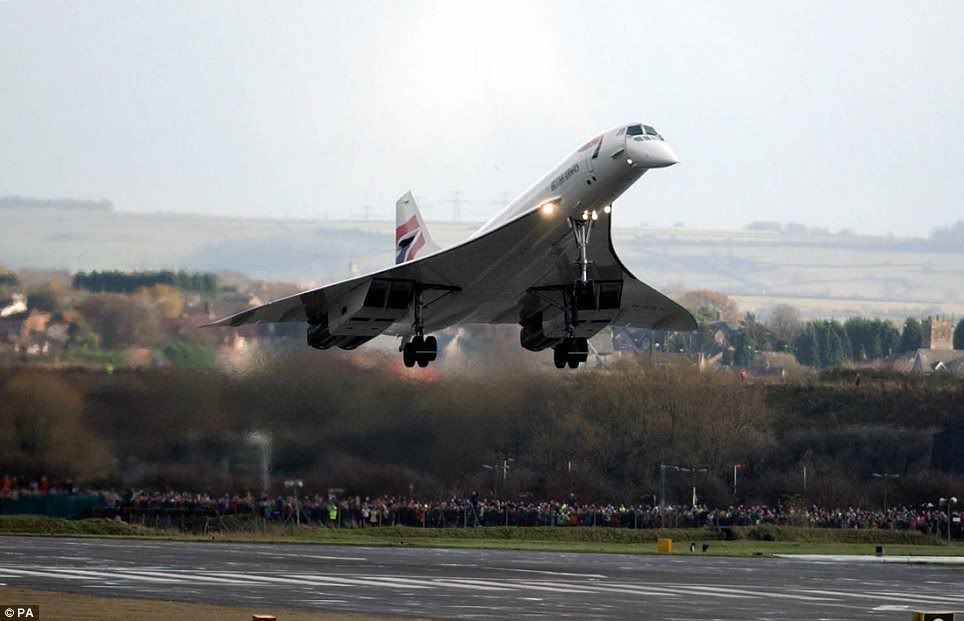
Heir: The new plane is being hailed as the successor to Concorde but will be propelled by a mixture of hydrogen and oxygen, meaning its only emissions would be water
There’s only one catch for prospective commuters – it will be another 40 years before commercial flights take place.
Plans were yesterday unveiled for the first hypersonic passenger jet, which would use three sets of engines to reach 3,125mph, more than four times the speed of sound, known as Mach 4.

A computer-generated handout image of the 'Zero Emission Hypersonic Transportation'

The model of an Airbus A 350 XWB on the EADS stand at Le Bourget airport near Paris this weekend

Hailed as the heir to Concorde, the aircraft would be propelled by a mixture of hydrogen and oxygen, meaning its only emissions would be water.
The project, developed by Airbus’s parent company EADS, was unveiled before the official opening of the Paris Air Show today.
Carrying up to 100 passengers, a set of conventional jet engines would help launch the aircraft from a normal airport runway, meaning the aircraft would not produce the noisy ‘sonic boom’ that Concorde did.
Once at a suitable height, the pilot would engage a pair of rocket engines which would propel the aircraft to much higher speeds and soar above the atmosphere, allowing a final set of engines known as ramjets to be utilised.
Currently used in missiles, these are highly efficient at speeds above 1,000mph, but cannot work from a standing start. They will help take the plane up to altitudes of 20 miles as it cruises at speeds beyond Mach 4. Cruising altitude for conventional passenger jets is around six miles.

The plane uses rockets and turbojet engines and could take people from London to Tokyo in two hours
Once at cruising speed, the plane – dubbed ZEHST, for Zero Emission Hypersonic Transportation – could fly from London to Malaga in southern Spain in just 20 minutes. A flight to Istanbul would take 30 minutes, and the plane could reach the east coast of the U.S. in around one hour.

The plane is not expected to be operational until around 2040, according to EADS officials
Unlike conventional aircraft, the plane would be powered by biofuels made from seaweed – hydrogen and oxygen – therefore making it one of the world’s most eco-friendly aircraft.
The company, based in Toulouse, France, believes a plane capable of carrying up to 100 passengers could make its first commercial flight within 40 years.
But its limited capacity could be a major flaw, according to aviation experts. David Kaminski-Morrow, air transport editor at Flight International, said: ‘It is still very much a concept vehicle, but it is within capability, the technology is available. The real difficulty is the economics of making a completely new type of aircraft work. It will take billions to take it off the drawing board and into the skies.

Heir: The new plane is being hailed as the successor to Concorde but will be propelled by a mixture of hydrogen and oxygen, meaning its only emissions would be water
Comments
Post a Comment